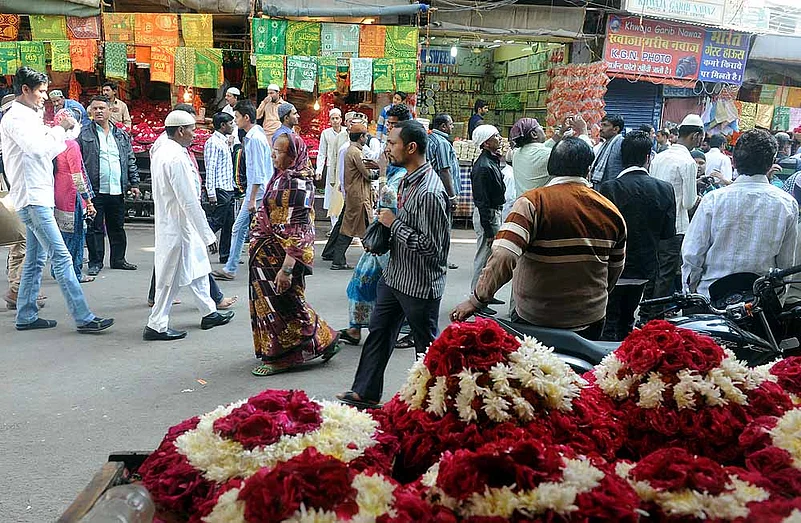The urs is still some time away, but as you wind your way down the street to the Dargah Sharif in Ajmer, the abode of the ajooba (miracles) is resplendent. Bright prayer flags adorn the way leading to the tomb of Hazrat Moinuddin Chishti, the great Sufi saint revered by devotees across India. There’s a great mingling here, not just of religions, but also of colours and palates. Fluorescent green chadars are laid out on beds of bright pink roses in the maqbara’s inner sanctorum, as the faithful press ahead to pay their homage to the saint. The stragglers in the outer corridors are paying their respects to the mullah sahibs while groups of women stand absorbed before the gathering pitch of qawwals. As the day warms up, the aromas of freshly packed sohan halwa and sweet bakarkhanis, prepared in the little shacks outside, blend with the fragrance of flowers and incense. For urs, the kalandars from Mehrauli (friends of the Garib Nawaz, as the saint is also known) will come walking to Ajmer all the way from Delhi to offer colourful chadars with gold and silver threads. But for now, the Buland Darwaza, on which the urs flag is usually hoisted, only has routine ornaments.
Among the top 10 mannat sites on any Indian travel advisory—and a hot favourite with Bollywood stars—the essence of Dargah Sharif comes alive around urs, as its guarded gates are thrown open to a sea of believers hypnotised by the ‘calling’. The walls of the dargah reverberate with the sound of qawwals as the faithful proceed with a ‘mannat’ on their lips, just as Mughal emperor Akbar and his queen did centuries ago during their pilgrimages on foot from Agra in observance of a vow.
Located at the foot of the Taragarh hill, the white marble buildings arranged around two courtyards—including a massive gate donated by the Nizam of Hyderabad and the Akbari mosque built by Shahjahan—elevate the holy shrine even as the rest of Ajmer town struggle under the onslaught of crass commercialisation. The historic Anasagar lake, ringed by the Daulat Bagh, has lost its grandeur and is now more of a dumping yard. Even the impressive Akbar Fort looks dour, receiving none of the attention it deserves.
The Dargah Sharif stands alone in a city stripped of its old opulence. It is believed that no prayer goes unanswered here. So even as ordinary folk walk around the sturdy pillars tying crimson wish threads, filmstars whose fates change every Friday, slink in for a final prayer. Their frequent visits may have the religious heads fuming, but the pull of faith is such—it draws every kind to the mother of all shrines in Rajasthan.


























